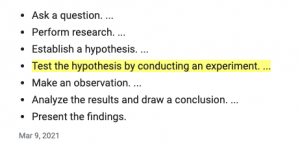Whether it’s your personal brand or a software startup, it’s demoralizing to sweat out a piece of content and get nothing-zero-nada in the way of response.
At times you can even begin to think an insult or caustic comment would be better.
Allow for nuance
But before you chuck the whole marketing enterprise, recognize that customers are fickle and hard to predict. Even the best marketers in the world have their duds.
Exhibit A: watch the Pepsi/Kendall Jenner spot.
Oops… Guess they had to take it down!
Marketing your small business takes a dual-pronged approach
Effective marketing is a skillfull blend of art and science. To earn the attention of your audience, you’ll need to practice both.
The art is in understanding human nature and knowing what’s worked in the past. That is the past in terms of your own experience as well as the tried and proven practices of past marketing experts.
As for your own experience, draw on your customer’s experience of what it’s like to do business with you. Key in on their initial reluctance too.
Use what you learn to develop marketing plans that account for both and begin testing.
The science is every bit as important as the art. To know what works, you have to enter the lap and run experiments then analyze the data.
The scientific method has been around since the 1600s, but the idea is still going strong because it works. It involves seven steps:
Each of these steps could be a separate post of its own, but let’s focus on one for now.
Smack dab in the middle of ‘the method’ is step 4: experiment. Place it in the middle of your marketing strategy too. The nice thing about it being an experiment is that you can be objective about the results.
It’s only data – use it to adjust and adapt for your next experiment.
Be creatively consistent
Consistency is a hallmark of great marketing, but it’s not a replacement for creativity.
Hammering out content is a must because it will help you develop your voice. But consistently posting hasty, shallow content doesn’t help anyone.
The hard work of creativity is learning what doesn’t work, and then – to quote Churchill – “…going from failure to failure without loss of enthusiasm.”
Check out the work of those whose content you watch or read consistently. Deconstruct it and try to figure out why it works. ‘Appropriate’ it, like we did the Churchill quote.
Don’t over-do it with novelty
We tend to think people are driven by what’s latest and loudest, or most clever. But people value reliable, proven help, and their BS detectors are more sensitively tuned than ever.
Better business and better marketing go hand in hand
Marketing your small business is difficult when no one is watching. Use this time to think deeply, not just about the marketing but also to think about building the kind of business you’ll be proud to market in the future.
You know…
… when everyone starts watching.



